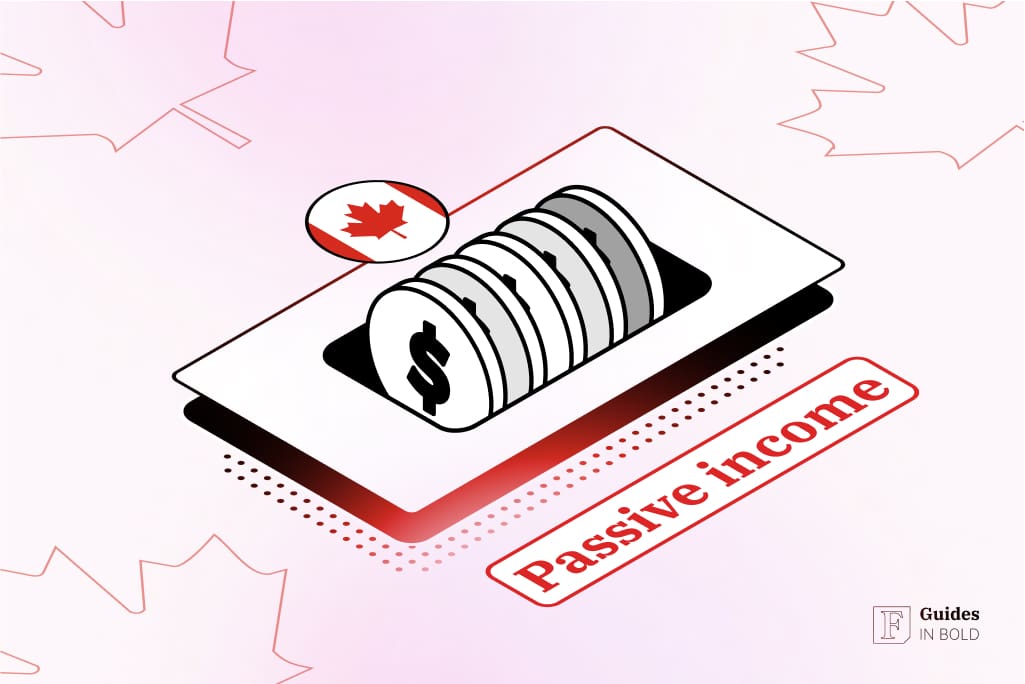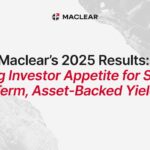Summary: Passive investing is a viable way to establish a source of income that can yield significant returns with little to no active involvement. This guide will explain what passive investing is, list some of the best passive income sources with pros and cons, and initiate the passive investing process using a regulated brokerage like Interactive Brokers.
Best Platform for Worldwide Stock Trading & Investing
-
Highly trusted multi-asset broker with clients in over 200 countries
-
Trade on 150 markets globally from a single platform (stocks, ETFs, futures, currencies, crypto & more)
-
Low commissions starting at $0 with no platform fees or account minimums
-
Easily fund your account and trade assets in 26 currencies
-
IBKR pays up to 4.58% interest on cash balances of $10k or more
What is passive income?
Active income implies an exchange of time and effort for financial benefits, such as a regular nine-to-five career job, but passive income goes in the opposite direction.
A passive income is a stable supply of cash regardless of the time you spend working for it, so it is ideal for investors who lack the time or simply want to supplement their active income without having to devote additional effort.
One of the most efficient ways to establish a passive income source is passive investing.
What is passive investing?
While the passive vs. active investing debate remains unsettled (and will likely continue), one has apparent differences and advantages over the other.
Active investing involves approaches that require constant attention, research, and frequent tweaking and adjustments to your total portfolio of assets. Again, passive investing goes the other way.
So, instead of earning a profit from the active trading of financial assets, passive investors benefit from holding long positions in passive income-providing portfolios.
Before you start investing
You should prepare yourself before you spend any money on investing. You must create a firm, debt-free financial situation for a higher chance of a successful investment. To achieve this, do the following:
- Create an emergency fund: Emergency funds represent safety nets that prevent you from free-falling due to unpredicted expenses such as healthcare bills, household repairs, or career loss. Three to six months of living costs stored safely away should give you the breathing room to invest comfortably;
- Pay off high-interest debt: High-interest debt is more costly than successful passive investing is profitable. Ensure you have cleared out all credit card, payday, and other loans before investing. Low-interest debts such as mortgages generally do not put investing in jeopardize.
After tackling these two issues, you can begin passive investing in Canada with a higher chance of creating a significant passive income source.
Note
How to engage in passive investing in Canada?
There are several ways to establish passive income in Canada, each with benefits and potential risks. Regardless of your choice, it will require an upfront investment, after which you can pull back and reap the benefits over time without monitoring or otherwise engaging with your assets.
This guide will mainly focus on three passive income investing choices in Canada:
- Dividend stocks;
- Real estate — REITs;
- Index funds and ETFs.
Passive investing in Canada #1: Dividend stocks
Best Platform for Worldwide Stock Trading & Investing
-
Highly trusted multi-asset broker with clients in over 200 countries
-
Trade on 150 markets globally from a single platform (stocks, ETFs, futures, currencies, crypto & more)
-
Low commissions starting at $0 with no platform fees or account minimums
-
Easily fund your account and trade assets in 26 currencies
-
IBKR pays up to 4.58% interest on cash balances of $10k or more
Dividend investing is one of the simplest types of passive investing in Canada. You can buy and sell dividend stocks just like regular stocks. The only difference is that dividend stocks pay out a part of the public company’s profits to shareholders as dividends.
While regular stocks are usually an asset meant for active investing portfolios, investors buy dividend stocks to establish a source of passive income. You can expect regular payments as compensation for having your investment in the dividend-paying company, and you will still benefit from any growth in stock appreciation.
Not all businesses pay dividends. The executive board decides whether this path is financially viable for their company, and dividend stocks are usually a trait of well-established and sizable enterprises.
Dividend shareholders usually receive them in cash monthly, quarterly, or yearly. The amount paid out can change depending on the company’s performance, so research the stock’s historical performance to verify long-term viability.
How to recognize the best dividend stocks?
Check these factors when you choose dividend-paying stocks for passive investing in Canada:
- Long-term profitability: Look for dividend stocks with long-term profitability and annual earnings growth between 5% and 15%;
- Liquidity: Ensure the company has healthy cash flow generation that allows it to pay dividends;
- Continuous payments: Confirm that the company distributed dividends for at least five years without intermissions;
- No excessive debt: Check the company’s debt-to-equity ratio and stay clear of those with ratios higher than 2.00;
- Research the sector: Besides the company’s fundamentals, analyze broader sector trends to estimate its trajectory.
Important
Prominent dividend stocks
- TD Bank is a leading Canadian financial institution known for its stable dividends. As one of the largest banks in North America, it offers a range of financial services and products to customers, contributing to its reputation as a reliable dividend stock;
- Manulife Financial is a global insurance and financial services company that offers life insurance, investment products, and retirement solutions. It is recognized for its dividend payments and its presence in both domestic and international markets;
- Tourmaline Oil is a Canadian energy company focused on natural gas and oil exploration and production. It offers dividends to shareholders based on its operations in the energy sector and its efforts to maintain sustainable production levels;
Pros and cons of dividend investing

Pros
- Potential for double profits: Stock price appreciation and dividends enable composite returns;
- Consistent payments: Dividends are a regular and stable source of passive income;
- Growing profits: Successful companies commonly increase their dividend payout annually;
- Lower volatility than regular stocks: Generally, only large-cap companies with stable earnings and growth pay dividends, so they are less volatile than their smaller-cap peers.

Cons
- Limited growth: As profits go towards dividends, there is less to invest in further business expansion;
- Lack of diversification: Less diversification increases investing risks;
- No guarantees: Dividends are not guaranteed, as companies can decide to withdraw payment during economic downturns.
Passive investing in Canada #2: Real estate (REITs)
Best Platform for Worldwide Stock Trading & Investing
-
Highly trusted multi-asset broker with clients in over 200 countries
-
Trade on 150 markets globally from a single platform (stocks, ETFs, futures, currencies, crypto & more)
-
Low commissions starting at $0 with no platform fees or account minimums
-
Easily fund your account and trade assets in 26 currencies
-
IBKR pays up to 4.58% interest on cash balances of $10k or more
Traditional property purchasing is among the first widely recognized forms of investing. However, directly purchasing real estate involves management, upkeep, and active engagement of the asset, which would make this a not-exactly-passive investing approach.
Real estate investment trusts (REITs) are an alternative to physical property investing. REITs are trusts that consist of businesses that own, manage, and maintain income-producing real estate across various sectors. Investing in REITs will expose you to housing and property speculation in Canada without the chores involved in owning the real estate yourself.
REITs dividends
Prominent REITs
- Dream Industrial REIT is a real estate investment trust that focuses on owning and operating industrial properties. It provides consistent dividends to investors by generating rental income from its diversified portfolio of warehouses and distribution centers;
- Canadian Apartment Properties REIT (CAR.UN): CAPREIT is a residential-focused REIT that owns and manages a wide range of rental properties, including apartments, townhouses, and manufactured home communities;
- InterRent REIT (IIP.UN.): InterRent is focused on residential properties, particularly in the multifamily rental housing sector. Its primary strategy involves acquiring and managing high-quality apartment buildings in major urban centers across Canada;
Pros and cons of REITs investing

Pros
- High liquidity: REITs are publicly listed;
- Diversification: The trusts usually contain companies from different sectors;
- Low volatility: REITs are stabler than most investment assets;
- Transparency: You can check the status of each REIT constituent at all times;
- High dividend yield: As REITs are required to pay 90% of their yearly income as dividends, they are among the most profitable dividend payers on the market;

Cons
- Low growth: As 90% of profits go into dividends, growth potential is severely limited;
- Taxable income: Dividends are taxed as regular income;
- Market and sector risk: Due to being tied to the real estate sector, which further ties into the state of the global economy, disturbances in any of these two might reflect in REITs’ performance (as shown with the COVID-19 pandemic);
- High debt: As the vast majority of profits go into dividends, REITs rely on loans for expansion;
- Interest rate sensitivity: REITs are particularly vulnerable to high-interest rates as one of the most indebted companies.
Passive investing in Canada #3: Index funds and ETFs
Best Platform for Worldwide Stock Trading & Investing
-
Highly trusted multi-asset broker with clients in over 200 countries
-
Trade on 150 markets globally from a single platform (stocks, ETFs, futures, currencies, crypto & more)
-
Low commissions starting at $0 with no platform fees or account minimums
-
Easily fund your account and trade assets in 26 currencies
-
IBKR pays up to 4.58% interest on cash balances of $10k or more
Index funds and exchange-traded funds (ETFs) are investing instruments that follow the performance of a market index like the S&P 500 instead of competing with it.
Investing in index funds and ETFs effectively spreads your investment over dozens or hundreds of companies across many industries and sectors, diversifying your portfolio and giving you access to multiple markets through a single entry point.
Prominent ETFs
- BMO S&P/TSX Capped Composite – the most significant Canadian companies trading on the Toronto Stock Exchange (TSX);
- iShares S&P/TSX 60 – the 60 largest stocks by market cap traded on the TSX;
- FTSE Canada All Cap – small, medium, and large Canadian stocks by market cap;
You might also consider investing in the three most broadly tracked indexes in the US, which are:
- The S&P 500;
- Dow Jones Industrial Average;
- Nasdaq Composite.
Pros and cons of investing in index funds and ETFs in Canada

Pros
- Diversification: Spreading your investment across various industries and sectors by investing in index funds or ETFs reduces the overall risk;
- Low fees: As passive investment instruments, index funds and ETFs need much fewer transactions, reducing trading and maintenance expenses;
- Easy access: Investors can easily access the stock market using a platform like Interactive Brokers, regardless of their previous experience, and invest in index funds and ETFs;
- Liquidity: These assets can be sold for cash quickly and easily;
- Transparency: Exchanges publicly list Index funds and ETFs, enabling investors access to the relevant information;
- Convenience: Investing in a fund rather than in individual stocks reduces money and time spent in the passive investment process;
- Simplicity: Unlike individual stock investing, managing a passive asset like an index fund takes little effort. A whole portfolio in one fund is much simpler than checking individual stocks.

Cons
- Limited control: When investing in index funds and ETFs, you have no choice over individual components;
- Volatility: The index funds’ performance closely follows their benchmark indexes. If the market starts free-falling, the index funds will go down with it;
- Slow gains: Compared to active stock investing, passive index fund investing has lower and slower yields.
How to safely engage in passive investing in Canada — things to consider
Keeping your portfolio safe is as important as increasing it in the first place. To safely establish passive sources of income in Canada, ensure you do the following:
- Diversify: You will better manage risk control in an extended portfolio with various financial instruments. Diverse portfolios make your investment safer and minimize your losses during asset downturns;
- Spread out your purchases: Lump-sum purchases reflect on the market and cause the price to go in the opposite direction of what you want. Consider using the dollar-cost averaging (DCA) approach instead.
- Stay wary of fraud: Ill-intended individuals prey in every market. Maintain your lead over new scam tactics, fake websites, and counterfeit documents by keeping informed about the latest trends. If you doubt anything, check the Financial Consumer Agency of Canada (FCAC).
Conclusion
Having a significant source of passive income in Canada might seem unrealistic, but you can create it in a relatively straightforward passive investing process. A revenue stream independent of your time and effort is a goal worth striving toward.
No investment is guaranteed to succeed. However, by following the passive investing tips and safety instructions listed above, gathering the necessary information through research, and making way for the upfront investment, you can set yourself toward the goal with odds heavily inclined in your favor.
Disclaimer: The content on this site should not be considered investment advice. Investing is speculative. When investing, your capital is at risk.
FAQs about passive income investing in Canada
What is passive income?
Passive income is a revenue source independent of your time that requires little or no daily effort. Unlike active income, you do not need to devote significant hours for it to yield revenue.
What are the best sources of passive income in Canada?
The best passive income sources in Canada include dividend stocks, REITs, index funds, and ETFs.
What are common mistakes to avoid when passive investing in Canada?
Never invest money you cannot afford to risk, and do not fall prey to emotions. Always research before investing, and diversify your portfolio to mitigate potential loss. The worst mistake you can make is not investing, as inflation threatens to eat up your idle savings.
Are stocks a viable option for passive investing in Canada?
Various Canadian stocks pay dividends to investors, establishing a stable source of passive income. Some of the best Canadian dividend stocks to buy include TD Bank, Manulife Financial, and Tourmaline Oil.
Best Platform for Worldwide Stock Trading & Investing
-
Highly trusted multi-asset broker with clients in over 200 countries
-
Trade on 150 markets globally from a single platform (stocks, ETFs, futures, currencies, crypto & more)
-
Low commissions starting at $0 with no platform fees or account minimums
-
Easily fund your account and trade assets in 26 currencies
-
IBKR pays up to 4.58% interest on cash balances of $10k or more




